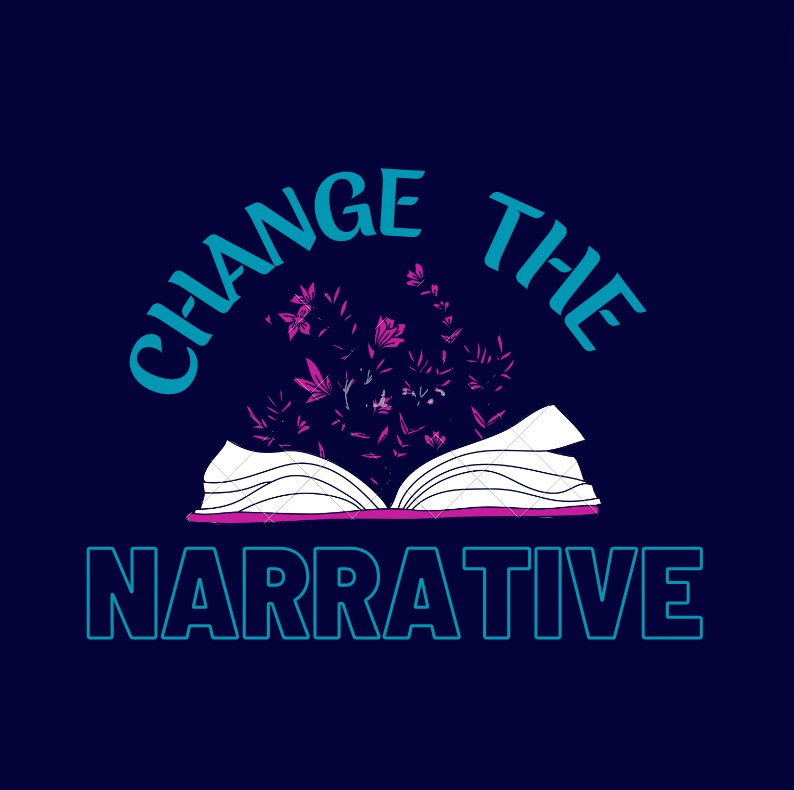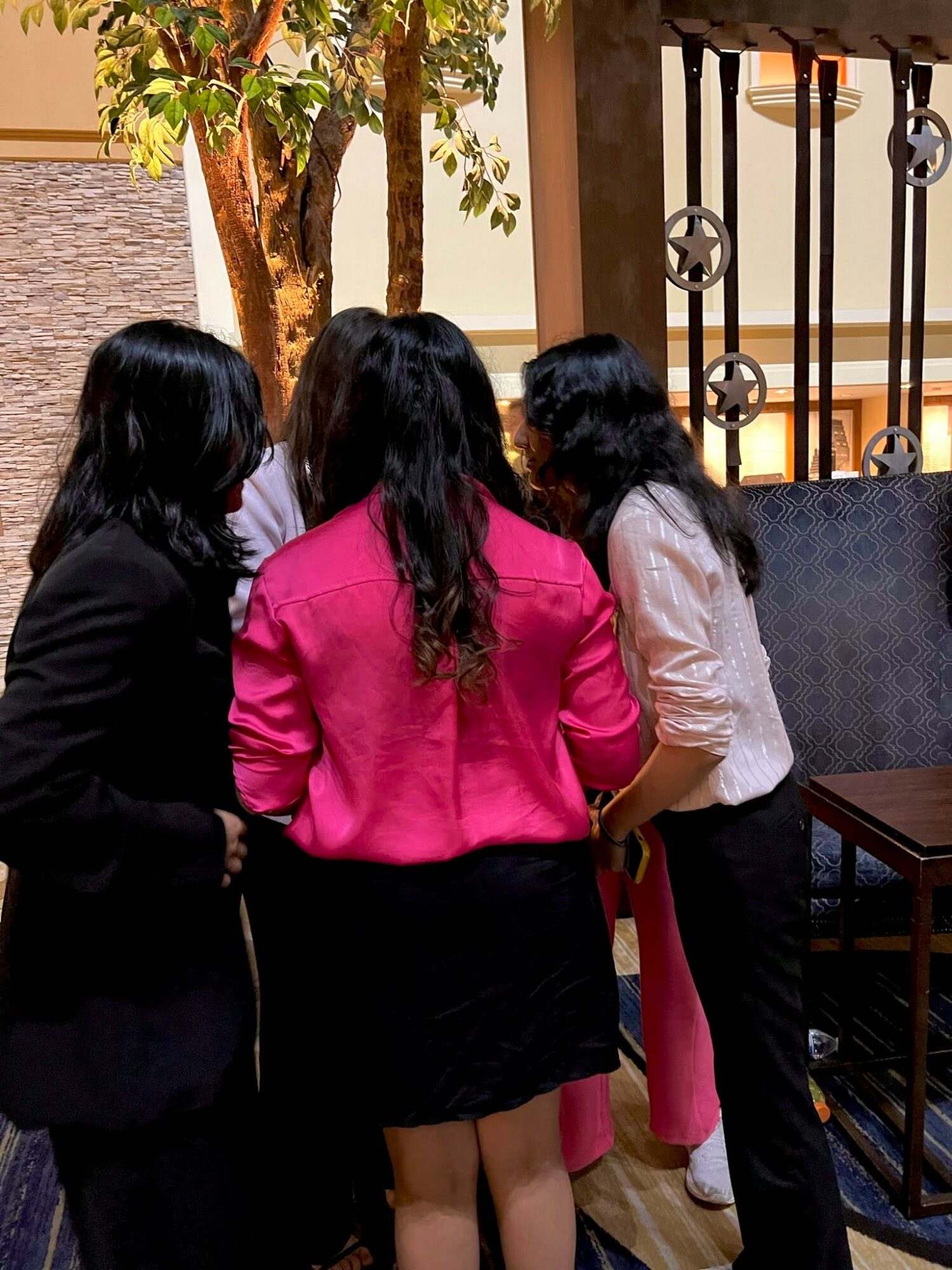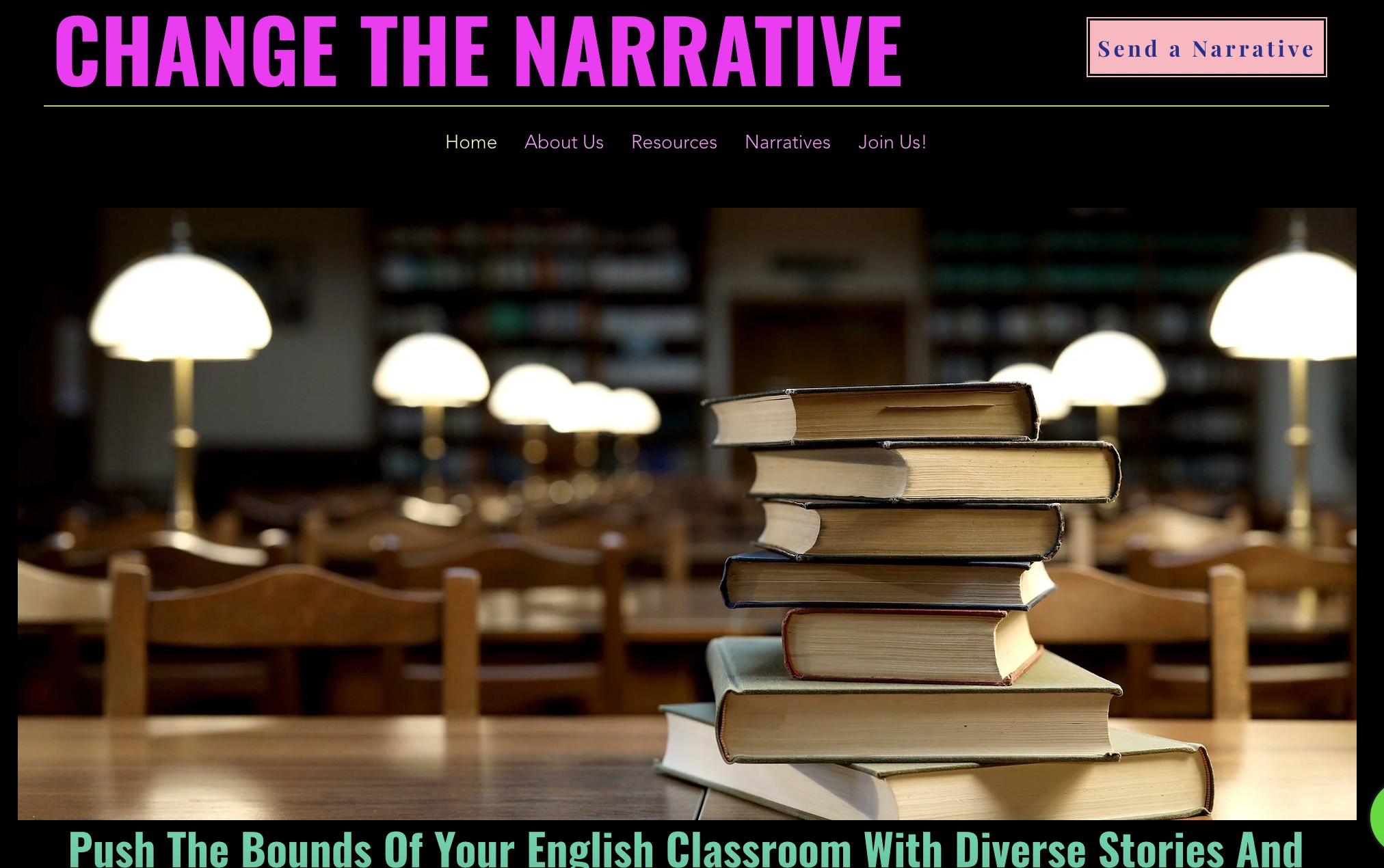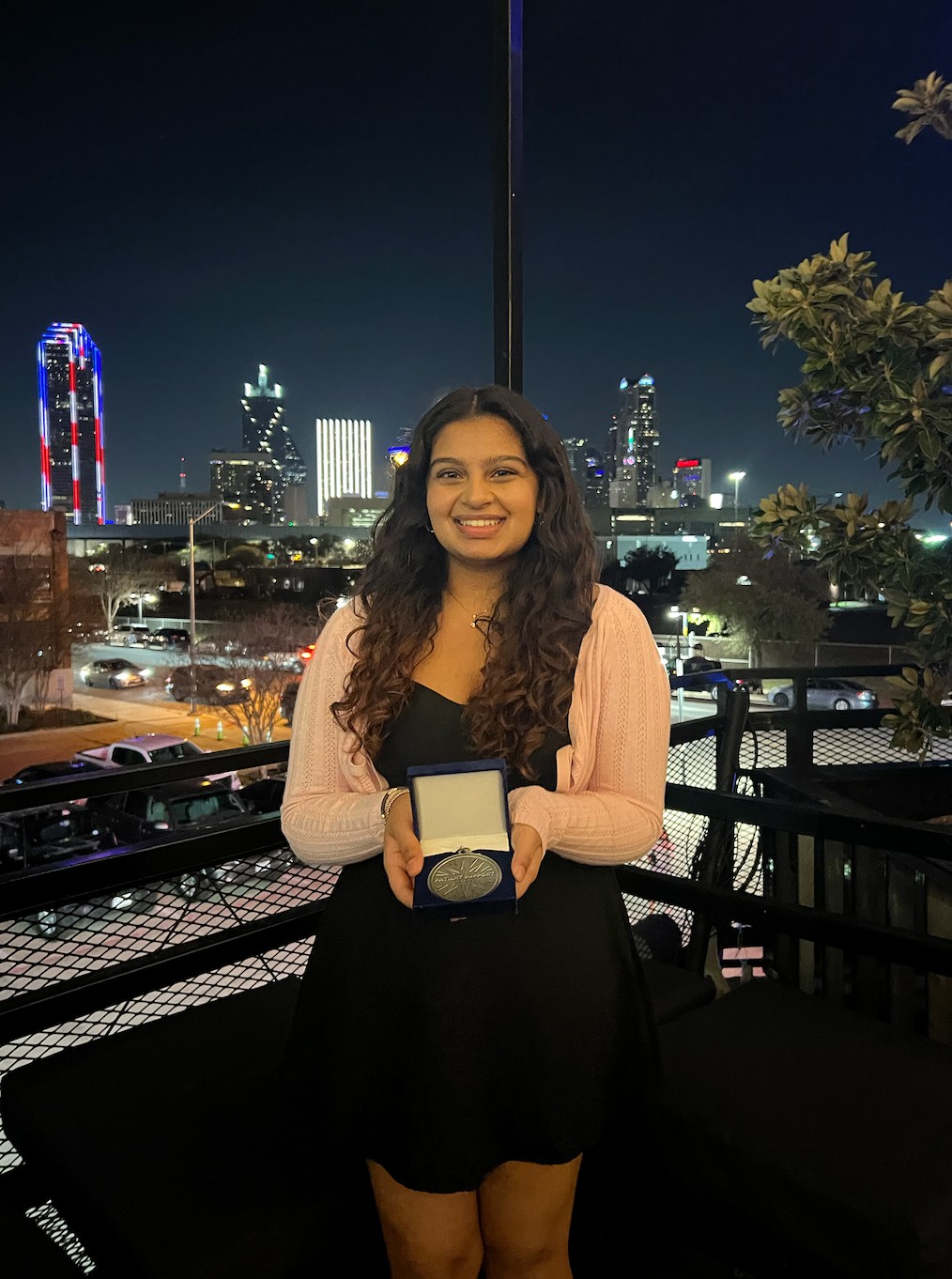

Today we’d like to introduce you to Dithyae Devesh.
Hi Dithyae, so excited to have you on the platform. So before we get into questions about your work life, maybe you can bring our readers up to speed on your story and how you got to where you are today.
Hi! My name is Dithyae, and I am the founder of Change the Narrative, an educational organization dedicated to making nationwide English curricula more diverse through resources and storytelling.
My journey in advocacy and creating change began when I started competitive debate in the sixth grade. Following this path has led me to compete in international competitions in World Schools Debate, a newer style that is centered around global impacts and creating arguments from the mindsets of different actors. As I was thrown into the deep end of public speaking and falling into researching rabbit holes about issues that centered on the global sphere, I discovered the importance of communication and advocacy, especially for smaller groups. Debate pushed me to become an advocate for not only myself but for those too afraid to speak up.
Then, three years ago, I read the Bhagavad Gita in my English class as a means to learn epic poetry, and I began to see curricula in a whole new light. As a Hindu, I felt like the foundation of my religion turned into a rhetorical analysis. To my culture, the Bhagavad Gita is like our Bible. But when it became a book we read in English class, the approach to teaching it made me very uncomfortable. I found it unfair that we were analyzing the foundation of my religion without mentioning anything about religion at all. Rather, all we discussed was the literary and rhetorical devices used in the text. When I heard people complain about the Gita, I was deeply offended and quickly realized I was not alone. The Bhagavad Gita isn’t something you read without comprehension, and after all the rude remarks my peers and I faced during the lessons, it became very clear that this text needed to be taught correctly or not at all. But the next year, we just read Shakespeare and a bunch of other white authors, which was wildly unfair because the only representation that we got was bad representation, and I realized that something needed to change. It dawned on me how a lack of representation within the curriculum was a direct cause of disrespect to communities of color. Students didn’t know how to treat the Bhagavad Gita because they had never experienced reading texts by other races, resulting in a lack of conceptual understanding.
As I worked to remove the book from my curriculum, I realized that 90% of literature taught in American schools is written by white authors, and in the 10% of the time an attempt is made to read work by authors of color, there is a major lack of respect to these authors and their stories. The lack of diversity became very reflective in the English curriculum. I ended up watching a show on Netflix a few days later called Ginny and Georgia, and in it, Ginny, a biracial student, spoke about the lack of diverse literature in her English class, so her English teacher gave her an assignment to pick a book that “embodies black literature” and share it with the class. After realizing how problematic it was, not only because the burden shouldn’t be on her to teach her whole class about black literature, but also because one book is not all-encompassing either, and the problem was just made worse, I realized something very similar had been happening in a more discreet manner at my school, and I realized that I needed to work on solving this problem.
The best way for my peers to develop respect was to foster an environment promoting racial equality, creating respect and representation, and bringing awareness to very valuable pieces of literature. The issue didn’t stop after the Gita was removed because that meant no South Asian representation at all, which in itself was unfair. That’s when I built my organization, Change the Narrative, not only to give students a platform to speak about the injustices they face within a curriculum whose foundation is built on discriminatory designs but also to provide schools with an avenue to make the change and advance racial equity in their classrooms.
Changing the narrative behind teaching these stories and providing teachers with an avenue to respectfully discuss or swap out books that have been taught for hundreds of years by white authors with the rich literature on minorities opens up an avenue for increased respect, representation, and equality while simultaneously allowing students to express their experiences to the world. Since its original creation, I have been able to reach out to more and more students who choose to express their voices on the problems within the curriculum and changes they wish to see, as well as diversify. I’ve also recently been recognized with a Certificate of Accomplishment from the Princeton Prize in Race Relations.
Would you say it’s been a smooth road, and if not, what are some of the biggest challenges you’ve faced along the way?
Challenging racial equality, especially within a school’s curriculum, will always come with its own independent struggles. The very first is garnering acceptance that a problem exists and it leads to bad outcomes. It’s hard to understand the conclusion that when students face a lack of representative literature in an institution that they spend so much time in, it fosters stereotypes and echo chambers in their minds, where unlearned concepts are unimportant and thus can be a leading factor in racial prejudice. However, these biases are proof that CTN is not only reaching students who otherwise haven’t been exposed to racially diverse literature but also allowing them to access the stories of their peers so hesitant individuals can get a first-hand understanding of alternate perspectives. The second challenge was addressing the teachers themselves. I realized that to make my voice credible, I needed to have structural evidence that a problem was affecting the student body. Curricula changes are difficult to implement because of several factors, but having this tool provides them an easy mechanism that can help me continue to grow. The final, most prominent struggle is gathering support. It takes a lot of courage for students to be willing to share their stories, and I have the utmost admiration for every student who has submitted a narrative. The voices of each and every one of these students are impacting the lives of the next generation of students nationwide.
Alright, so let’s switch gears a bit and talk business. What should we know about your work?
When I founded Change the Narrative to address the lack of diversity and representation of authors of color in English curricula, my original intention was to share books that could be taught in English classrooms that relatively followed a structure similar to preexisting lessons but written by authors of color. However, as I was collecting research and gathering support, I collected several testimonials along the way and found a rich group of students who were just as willing to push for change and willing to share their voices with the world.
As I began to focus more on insight, we uniquely gave students a platform to speak about the injustices they face within a curriculum whose foundation is built on discriminatory designs. Each narrative shines a light on the impacts of inequality and lack of representation within the English curriculum on students. Through my project, students have a platform to share their personal experiences, impacting the hundreds who gain access to these narratives. As I continue to strive for racial justice and recognition, individuals begin to respect the literature of people of color and comprehend the perspective of members of their community.
Our website holds a wide variety of literature taught by a diverse group of authors. For example, The book list provides teaching mechanisms to respectfully approach topics and cover cultural significance and values, as well as training and lesson plans to approach the piece respectfully without losing the cultural foundation. With more to be added, we currently have seven different racial and ethnic categories from different parts of the world. Each category is filled with books, and each book has a unique page dedicated to it that gives a brief synopsis as well as 3 different avenues for how the piece of literature can be taught. We have since added poems and short stories to these lists as well. This provides schools with an avenue to make the change and advance racial equity in their classrooms. As I continue to strive for racial justice and recognition, individuals will respect the literature of people of color and comprehend their perspectives.
But, what makes all of this unique is the student perspective CTN is based on as we bring awareness to the education community as schools learn about the issue of the lack of racial equity within novels taught at school.
If we knew you growing up, how would we have described you?
If you ask anybody in my family, growing up, I never stopped talking. I always had the urge to try everything, from sports to musical instruments. No stone was left unturned because I did not want to miss out on the opportunities life provided me with. It was this mindset that pushed me into speech and debate as a means to channel all this energy. I’ve always carried a belief with me that every single person deserves to explain their perspectives and reason for thinking. It was an avenue to challenge all these beliefs and needs to advocate and stick up for myself. The more tournaments I competed in, even leading to me to state and international championships, the more I opened myself up to a leadership mindset and always wanted to make a difference and leave an imprint on those who would help me create change.
Contact Info:
- Website: https://changethenarratives.wixsite.com/ctns
- Instagram: https://www.instagram.com/changethenarrative_/
- Other: https://linktr.ee/changethnarrative














